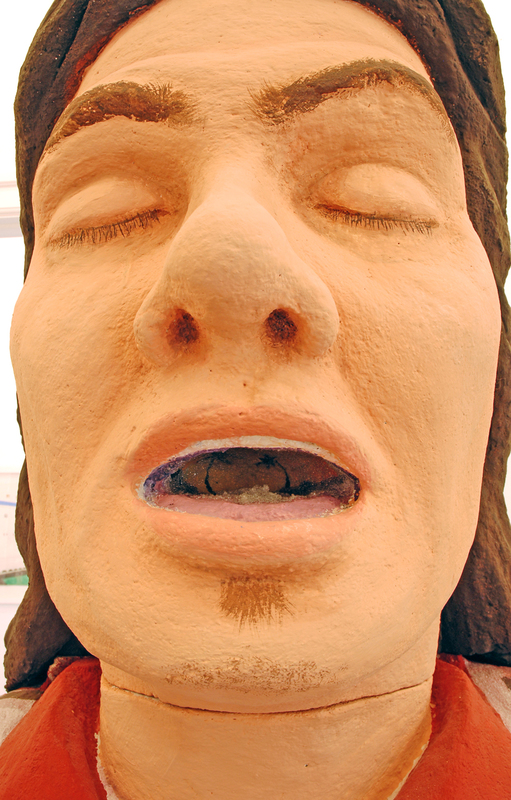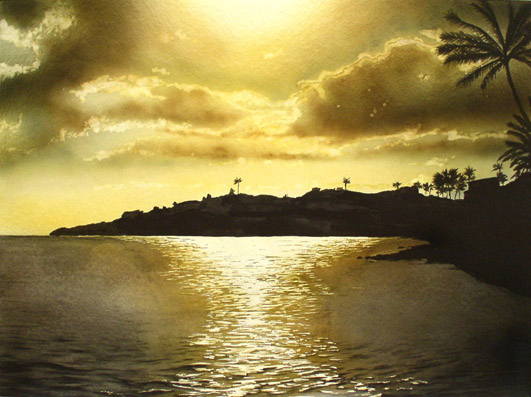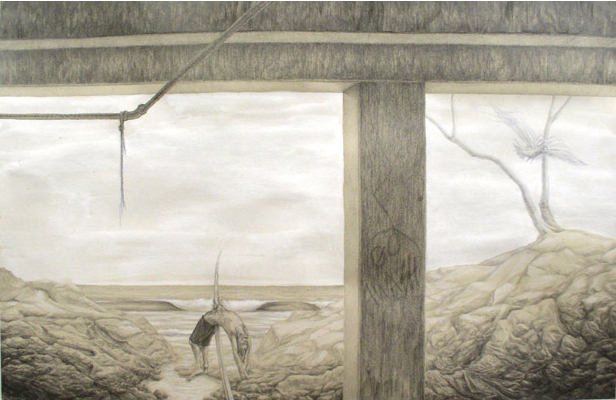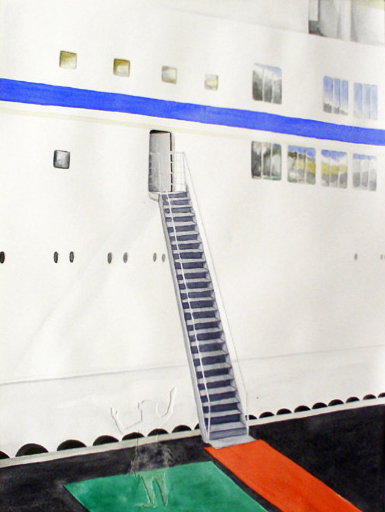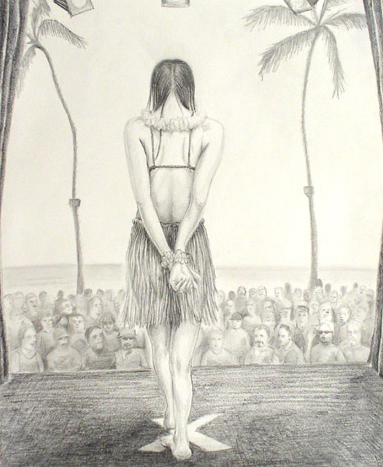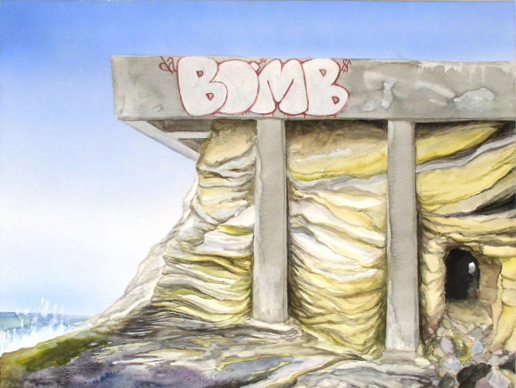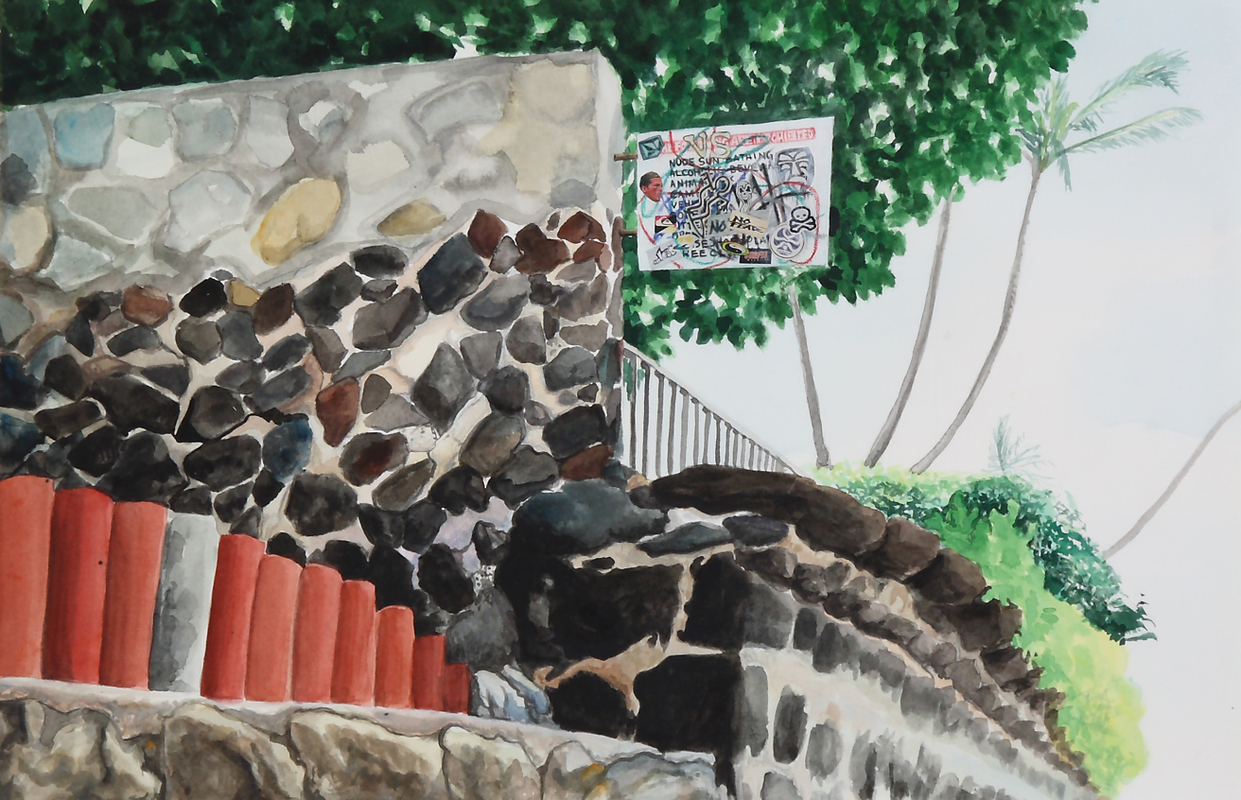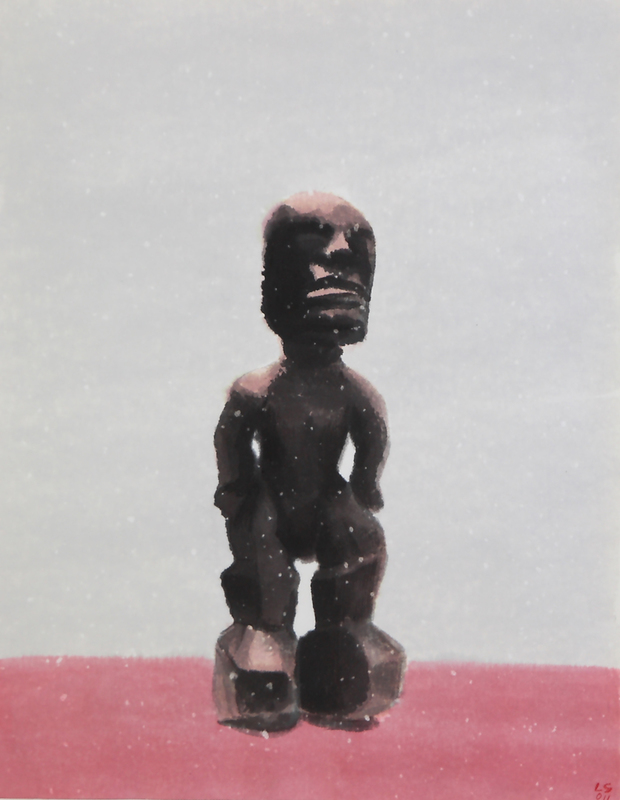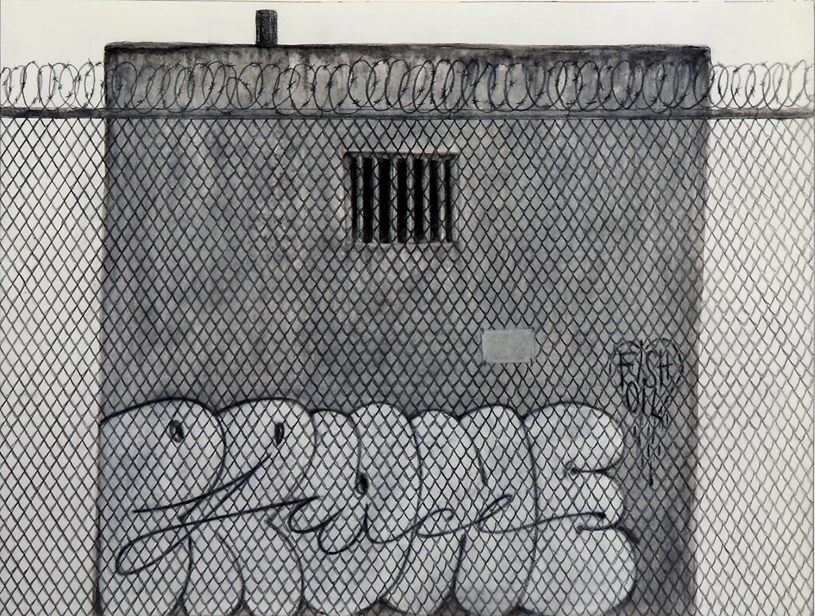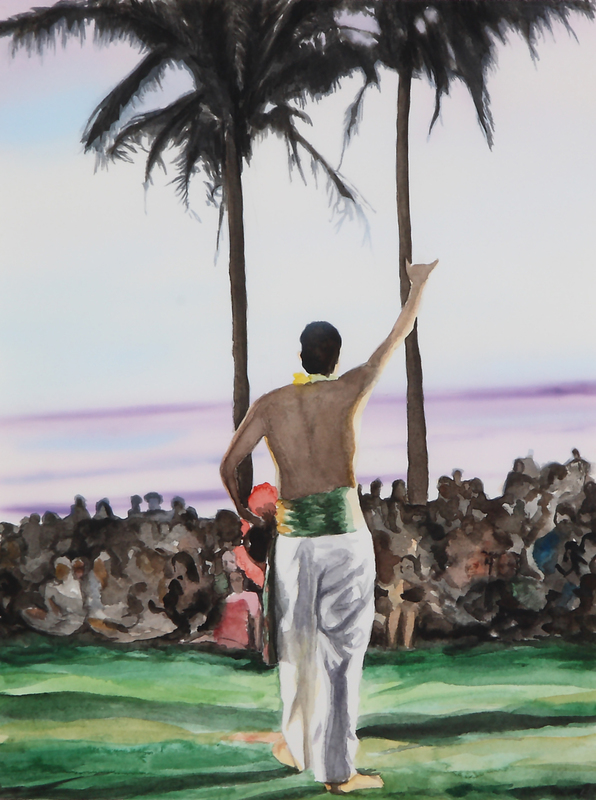Lawrence Seward
- Artist Statement
- Curator Statement
- zingmagazine project
- Website
Artist Statement
In most cases, these works have sprung from my experiences living in Hawaii. Although I currently live in New York City, my frequent visits back to the islands provide a contrast to my urban life. In this work, I reflect on memories of my youth and the landscape and culture of Hawaii.
Hula dancers from backstage. The end of the beginning of a performance. The farewell “Aloha” dance also bids goodbye to a cultural dance lost to commercialism and world tourism.
A figure skewered through the back by a surfboard at the water’s edge evokes suicide, sacrifice, mishap, and the death of youth.
The landscapes in these works are transformed and private. The oceanfront, a symbol of wealth and luxury, provides an environment where two extremes of the social/economic order exist—public beaches abut private property.
Lost artifacts, often woodcarvings, found in a museum, always seem to be looking for context. They live in museums and private collections, but are looking to the past for the culture they served, as real ancestors, spirits, and gods.
Curator Statement
Lawrence Seward’s Paradise is both a benevolent conversation about local island history and a more determined critique of our shrinking world. He questions our semblance of Paradise—what Paradise means as an ideal, what it means in our perceptions, what it means as we humbly ascribe to create it for our future—and his Paradise ends up being a deal with the devil, something we’ve been warned against.
His work pushes as much as it pulls. He dissects our perceptions of Paradise, those modeled after Hawaii 5-0 and Magnum, those island ideals that eroded like the lapping wave of a beach comb. His work teeters on seeming normality because we want normality in Paradise, and yet it is a place where normality is tweaked.



